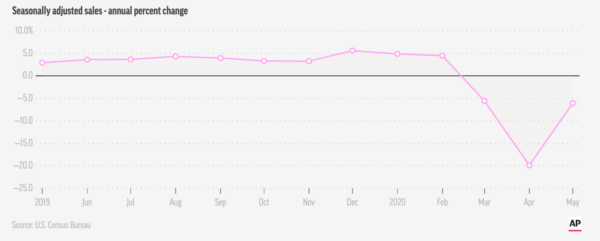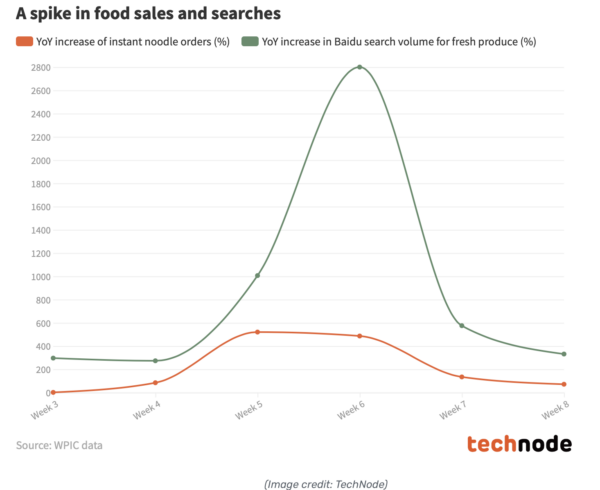Retail sales worldwide have been affected by the COVID-19 pandemic, with in-store shopping experiencing a notable drop in activity. The initial stay-at-home orders significantly impacted consumer buying habits. In the United Kingdom, retail sales in April fell by about 18%. In the US, retail sales fell 16%, while in China, April retail sales decreased by 7.5%. Most of the retail sales drops are tied to significant declines in spending on non-essential items. Food sales have remained steady and in many cases have 25%. Although more retailers struggled than succeeded, the digital space has made progress that is likely to last even after the pandemic ends. We’ve continued to see ups and downs in markets worldwide, but e-commerce has shown consistent growth as consumers remain at home and choose to shop online.

Who Has Benefited in China
In China, the situation in Hubei Province appears to have generated an acceleration of the trajectory towards digital sales. The outbreak and the subsequent data has slowly begun to show a detailed picture of adjustments made by Chinese consumers.
A similar spike in online activity is also occurring in food sales and fresh produce. The number of online searches for fresh produce on Baidu for the first two months of the year was up anywhere from 273% to 2800% YoY. The ability to buy online and have your groceries delivered has allowed Baidu to gain a greater market share. This led to upside volatility to Baidu share trading. Leading social e-commerce platform Pinduoduo reported that condoms and birth control are among the most popular items for sale on its platform.

Online Purchases Expand in the UK
A Google survey conducted in May in the United Kingdom showed that 80% of car shoppers would now consider buying a vehicle online. This is up 14% since the beginning of the pandemic. As a result, 20% said that they would purchase a vehicle sooner if there was an online option available. Additionally, 90% of those surveyed in the UK use the internet to shop for a car before visiting a showroom, pushing dealers to provide a robust online shopping experience to enhance their sales.
Online Purchase in the US have Increased
In the US online sales for consumer-packaged goods were up 45.0% in April according to U.S. e-commerce data from research and polling firm Nielsen. A blockbuster month of May in retail sales gave a boost to the market, but things are still very much in flux. As retail stores begin to slowly re-open, we’ll keep close tabs on the retail industry to see how the pronounced shift to e-commerce continues to impact the industry.
How Has Shopping Experience Changed?
The move toward shopping using online stores has led to increased use of mobile devices. Mobile phones are the most popular device for online shopping. 72% of consumers are using mobile devices to shop in stores according to the latest PYMNTS’ 2020 Remote Payments Study.
The Bottom Line
As the shelter in place orders get lifted and restrictions are diminished retail sales at stores will begin to accelerate. During the pandemic, the stay at home mandates created a new buying habit which will likely persist even when things begin to revert to normal. These new buying habits should assist e-commerce which has brought forward the digital shopping experience. Success for companies will depend on the moves they make now while the virus continues to linger and wreak havoc on a variety of industries.